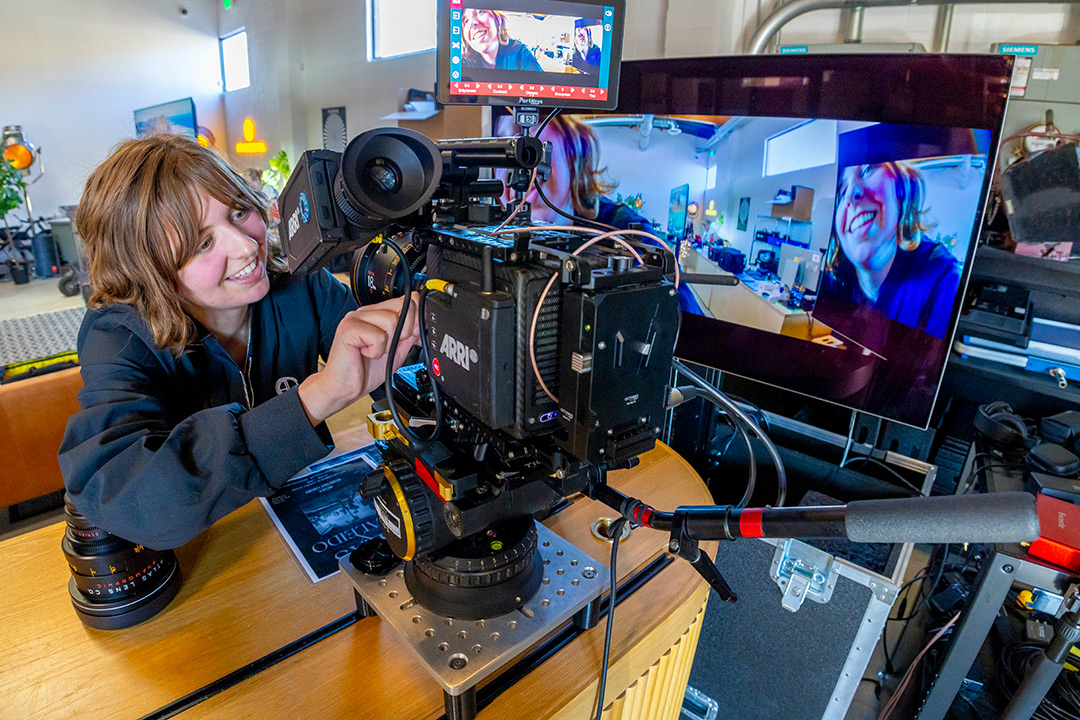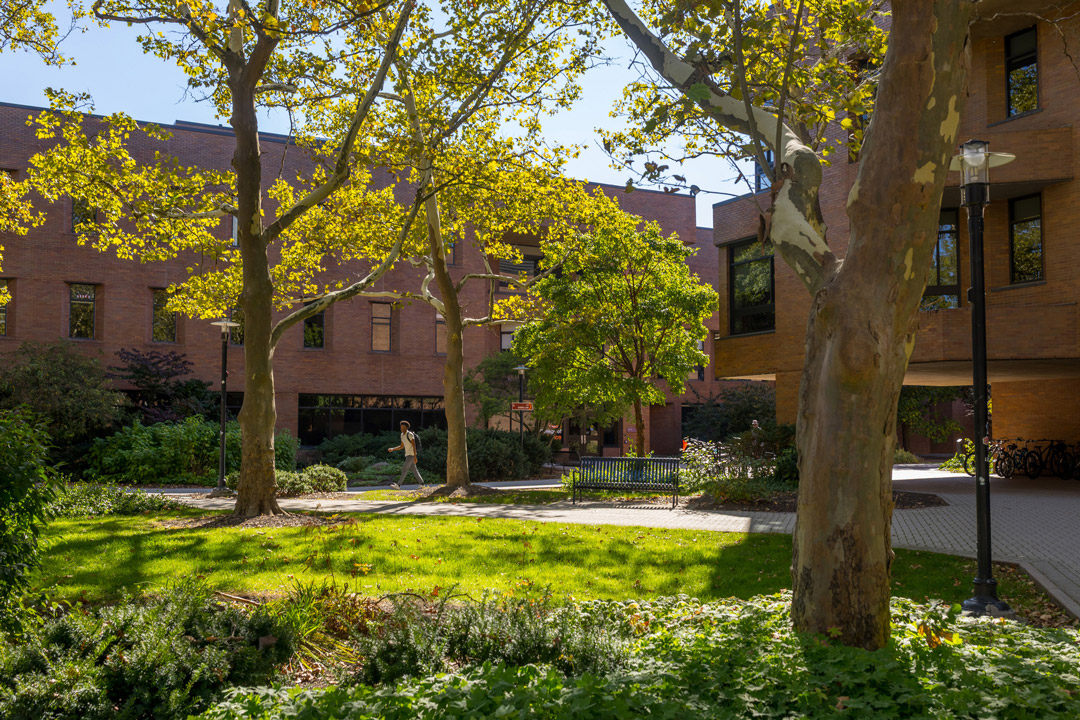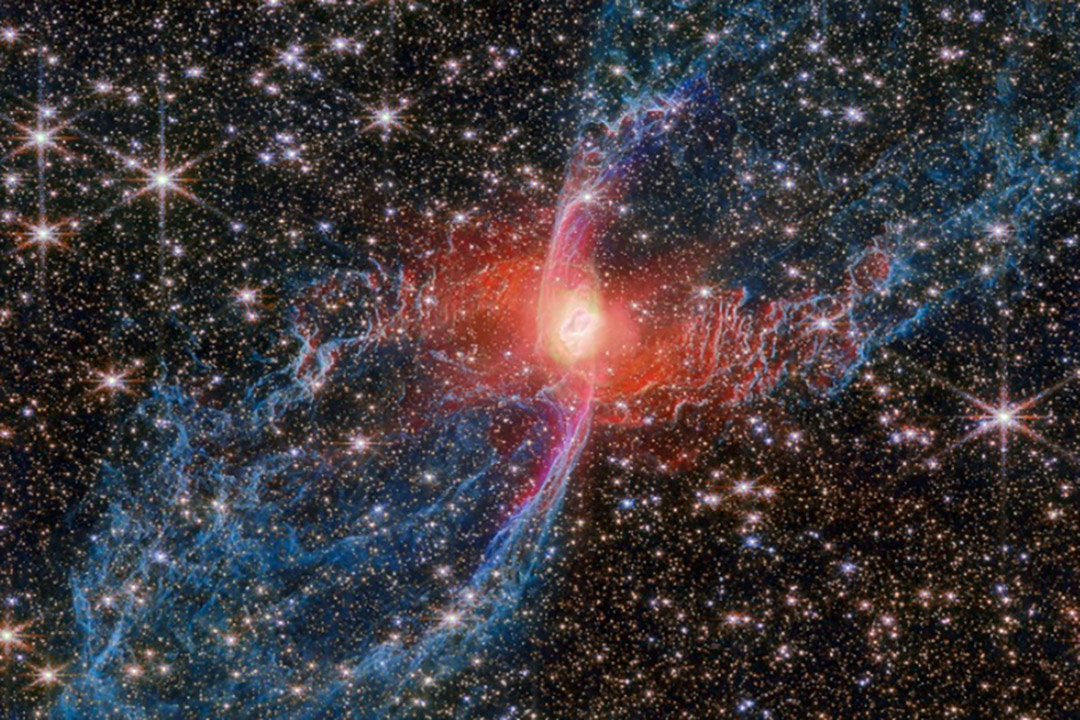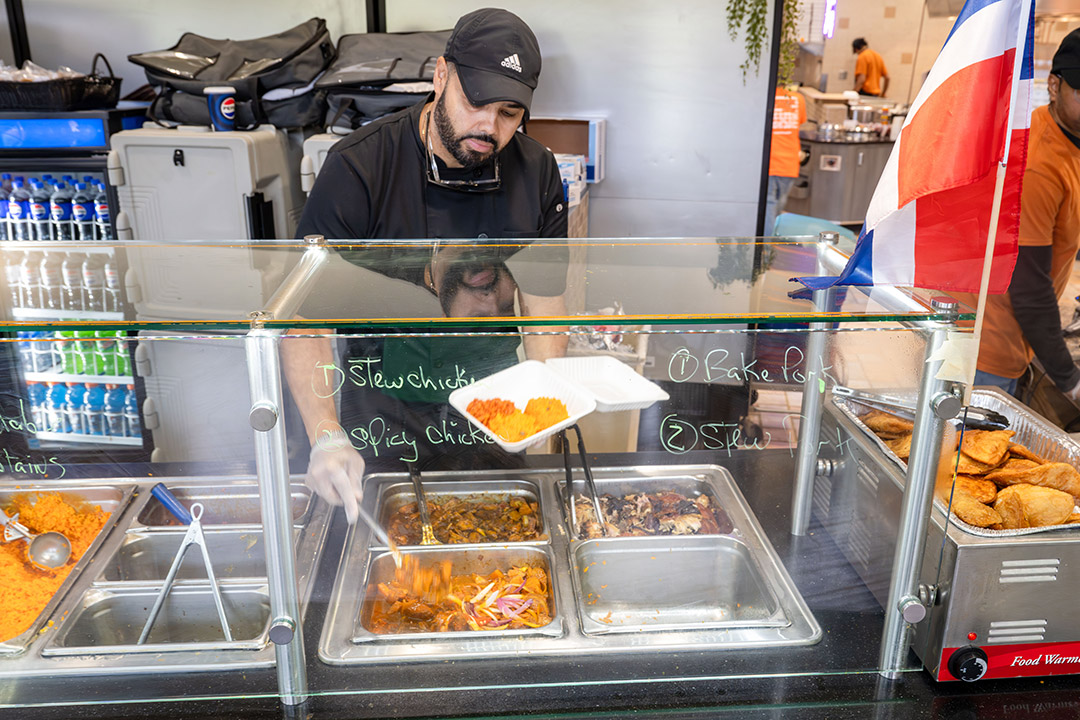3+3 law program celebrates first cohort of graduates and expanded program offerings
The path to obtaining a law degree typically requires at least seven years in higher education. However, students enrolled in RIT’s Accelerated 3+3 Law program are able to shave a year off of their journey and get a head start on establishing their career in law.
This May, fourth-year students Megan Hartman, Kate Hickey, Kaitlin Sommer, and Ella Walton will simultaneously graduate from RIT and complete their first year of law school, making them the program’s first cohort to fully transition from their undergraduate studies at RIT to their legal studies Syracuse University College of Law.
Hartman, from San Diego, Calif., pursued a double major in sociology and anthropology and public policy while at RIT. She explained that participating in the program gave her an advantage on her journey toward becoming an attorney.
“This field is notoriously competitive, and there are issues surrounding artificial intelligence and a possible next-generation bar exam that are shaking things up, so you need that competitive edge to power you through,” said Hartman. “We’ll also have a head start when it comes to applying for jobs. It will take time to get up to the more prestigious job titles, but I’ll be starting that journey when I’m 24. Many people don’t complete their law degree until their early 30s.”
Hickey, an international and global studies and public policy double major from Halifax, Mass., added that the guidance that came with enrolling in the program helped build her confidence prior to starting her first year of law school.
“There were a lot of people in our class who struggled the first few months because they didn’t have experience reading cases or things like that. While at RIT, I attended some of the RIT Pre-Law Society events where alumni would come in and run mock law classes with us, so I had some idea of what to expect going into my first year at Syracuse,” said Hickey. “I think that the confidence I had knowing that I already sat through similar classes and was able to succeed really helped prepare me.”
Looking beyond law school, Hickey and Hartman both have visions for their future careers. Hickey aims to work in the national security and counter-terrorism law sector, and Hartman is interested in becoming a litigator and working in the government sector. Both students extend their gratitude to Jennifer Gaylord, pre-professional studies coordinator and academic advisor, and the many RIT alumni who worked with the RIT Pre-Law Society and the 3+3 program students and helped them succeed in their studies.
As the program celebrates the first cohort of graduates, leadership in the College of Liberal Arts, where the program is housed, also announced that the 3+3 program is expanding through a new partnership with University at Buffalo School of Law. Qualified undergraduate students at RIT will have the opportunity to choose between pursuing their law degree at Syracuse University or at the University at Buffalo starting in fall 2024.
“Accelerated degree pathways can be invaluable for students who are hoping to streamline their education. Partnering with the University at Buffalo School of Law will provide more options for our students as they work toward law school,” said Kelly Norris Martin, interim dean of RIT’s College of Liberal Arts. “Having a plan in place that can save students both time and money is a clear benefit, but participating in the program can also provide some guidance as they navigate the world of higher education and ensure that they have the foundation they need to succeed in their career goals.”
To be eligible to apply to University at Buffalo School of Law, undergraduate students at RIT must have completed a minimum of 90 credits by the end of their third year of undergraduate studies; earned a cumulative undergraduate GPA of 3.5 or higher; and successfully completed the Law School Admission Test (LSAT) with an LSAT score at or above the median LSAT score for the School of Law’s previous year’s enrolled class, or a GRE score at or above the 70th percentile on Verbal Reasoning and 40th percentile on Quantitative Reasoning.
For more information, go to the 3+3 law program webpage or contact Jennifer Gaylord at jmggla@rit.edu.
Latest All News
- Global scholars gain international professional and personal experiencesNatali Belusic wanted to learn about business while having the opportunity to be immersed in an English-language environment. RIT Croatia was the perfect choice to achieve that, and it opened the doors for international learning and experience. After landing a summer internship at Goldman Sachs in London, Belusic is now studying on RIT’s main campus in Rochester as part of the global scholars program. Global campuses RIT has global campuses in Dubai, Croatia, and Kosovo. Learn more about degree programs offered at each campus and how to study abroad at a global campus. The global scholars program brings students from RIT’s international campuses to study for up to two terms at the Rochester campus. The experience gives students a chance to diversify their cultural perspectives, expand their academic horizons, and build their professional networks. The program, in its 15th year, welcomed its largest group of 77 students this fall. When it began in the 2010-2011 academic year, there were just six global scholars. Alumni of the program have gone on to successful careers. One former student helped build a system for the International Space Station then went on to Columbia University to pursue a master’s degree. Another is the curator of the National Gallery of Kosovo. Others work for companies including TikTok, Coca-Cola, and Amazon. Belusic is studying international business. She already gained valuable real-world experience while interning at Goldman Sachs’ risk division for nine weeks. While she didn’t think she would get the internship because of how selective and competitive it is, she felt well-prepared when applying. “RIT helped me prepare for the internship in terms of courses that I had and helped me shape my résumé and cover letter, give me knowledge on how to approach interviews, and network, as well,” she said. Now Belusic is using her time in the U.S. to broaden her academic and professional portfolio before graduating this spring. Then she will begin a full-time role back at Goldman Sachs in London next summer. “I decided to take the opportunity of additional courses and resources here that are not offered in Croatia,” said Belusic. “For example, the Bloomberg terminals that we can use and social perspective classes gave me benefits for my academic journey.” Another opportunity Belusic had while studying in the U.S. was to publish a research paper with one of her professors from Croatia. She did this through the honors program with the International Conference on Business, Management, Economics, and Information Systems hosted by The City University of New York. Experiences like Belusic’s are what make the global scholars program and RIT’s international connections a benefit for students.The program gives international students the chance to complete minors and participate in research projects that may not be offered at their home campuses. These benefits lead to impressive career opportunities. While Belusic has always been interested in working abroad, it may seem daunting for some students to travel and study in a different country. However, Belusic explained that going to a new place with a new environment helps a person learn more about themselves and how they handle different situations. “Study-abroad experiences have always exceeded my expectations,” said Belusic. “There are so many reasons to do it and so many support systems. Say yes to all the opportunities wherever you may go.”
- ‘TheWrap’ recognizes RIT as one of the nation’s top film schoolsForward-thinking faculty; curriculum that fuses technology, the arts, and design; and a legacy of priming students with a maker mentality helped RIT’s School of Film and Animation (SOFA) maintain its place on TheWrap’s list of Top 50 Film Schools of 2025. This year, RIT ranked 32nd on the list. “We are very excited to have been ranked again by TheWrap. This is evidence of the amazing work our students and faculty are doing every day. The interactions and collaborations between our live action, animation, and motion picture science students prepare all of them for the challenges and opportunities brought by what is probably the most dynamic time in our industry,” said Ricky Figueroa, SOFA director and John Traver Professor. Over the last year, the film and animation school increased its reputation in Hollywood, earning recognition from publications like Variety, The Hollywood Reporter, and Animation Career Review in addition to TheWrap. When granting this year’s rank, TheWrap stated that RIT is well positioned to help students in the era of rapid technological change ushered in by digital tools and AI. The publication also noted that the university is at the forefront of these trends and puts industry-standard tools into the hands of students, citing facilities like MAGIC Spell Studios as evidence of RIT’s dedication to the fusion of creativity and technology. “The School of Film and Animation is the perfect example of RIT’s mission to utilize technology, the arts, and design to change the world. Recognitions like this affirm we are on the right track,” said Figueroa. Immersive and creatively challenging programs like RIT in LA and the new student exchange program with the Film and TV School of the Academy of Performing Arts in Prague (FAMU) offer opportunities for students to exercise their skills outside of the classroom. Experiential learning opportunities like these contribute to RIT’s legacy of nurturing a “maker” mentality in students. TheWrap stated that this legacy is evident when considering the outcomes of alumni like Alex Forsythe, senior director of science and tech at the Academy of Motion Picture Arts and Sciences; John Traver, Frame.io co-founder and creative technologist; and cinematographer Michael Slovis. Go to RIT’s School of Film and Animation website to learn more about its program offerings.
- Co-op student applies tech skills to the startup finance worldBen McManus, a fifth-year computer science student from Denver, is gaining firsthand experience in automation and IT in his co-op at Indivisible Partners, a national startup finance company co-founded by RIT alumnus and former Merrill Lynch executive Alok Kapoor ’93 (computer science). How did you first connect with Indivisible Partners? It actually came through my fraternity, Kappa Delta Rho. Alok Kapoor, one of our alumni, came to one of our formals and mentioned he was looking for students with tech experience. Our president connected us, and that’s how I got the opportunity. Greek life at RIT has been a big part of my experience. It has helped me grow as a student and a professional. What is your role during the co-op? I work as an IT technician, mainly focused on automating internal processes to make everyday tasks more efficient. I got better at communicating technical concepts in plain language, realizing not everyone speaks “tech.” I also sharpened my scripting and automation skills, which has given me more confidence in both IT and coding. What did you learn about working in a startup environment? It’s a lot of fun but it can be stressful. Every week feels different, and I had to adapt to new challenges and people quickly. But that’s what I liked about it. It’s organized chaos and learning how to work through that has made me more confident stepping into any tech team. What advice would you give to other students preparing for their co-ops or entering the job market? Take risks and use your connections. The job market is tough right now, so every opportunity to network counts. My co-op came through my fraternity, which really opened my eyes to how valuable RIT’s alumni community can be. What surprised you most about working in the financial world as a tech student? I didn’t expect to work alongside so many people who came from big firms like Merrill Lynch and Fidelity. It was eye-opening to see how much technology drives their work. It reminded me that tech touches every field, even ones you don’t normally think of, like finance.
- Simons Empire Faculty Fellowship to fund four College of Science positionsRIT’s College of Science will receive funding from the Simons Empire Faculty Fellowship program for four new tenure-track faculty members. The four positions are in priority areas of mathematics, neuroscience, physics, and ecology and evolutionary biology. Each award is for $825,000, for a total of $3.3 million, and will provide salary, fringe, and start-up support for the positions for three years. “This award is a tremendous opportunity for the College of Science to continue its upward trajectory in research and innovation,” said André Hudson, dean of the College of Science. “By recruiting outstanding junior faculty, we are not only strengthening our academic community but also advancing RIT’s commitment to cutting-edge research, discovery, and scholarly excellence. These new faculty hires will help shape the future of science at RIT and ensure that our faculty, staff, and scholars are at the forefront of fundamental and translational breakthroughs.” The Simons Foundation and Simons Foundation International (SFI) established the Simons Empire Faculty Fellowship program to accelerate faculty recruitment and strengthen research in mathematics and the basic sciences at institutions across New York State. Through this program, SFI provides funding to support the hiring of junior tenure-track or equivalent faculty whose research advances fundamental scientific discovery. The recommendation for funding comes through support from RIT’s Office of Corporate and Foundation Relations. “Especially given the current political and higher education landscape, the university recognizes the need to strategically seek a wide set of opportunities to bring in world-class faculty and to facilitate groundbreaking research,” said Sara Vinch, assistant vice president of corporate and foundation relations. “Our office supports RIT faculty while building strong external partnerships with the goal of harnessing opportunities such as these. We are so grateful to the foundations for their support." Hudson noted that a team of College of Science personnel were instrumental in the effort to submit a successful proposal. Those include Larry Buckley, senior associate dean; Kate Wright, head of the Thomas H. Gosnell School of Life Sciences; Michael Murdoch, head of the Integrated Sciences Academy; Seth Hubbard, head of the School of Physics and Astronomy; and Joshua Faber, head of the School of Mathematics and Statistics. Once the college submits offer letters for each position, along with other supporting documents, the foundation will issue intent-to-fund letters for each position by July 2026.
- RIT research reveals new details in the Red Spider NebulaA creepy, crawly object in the middle of the Milky Way can now be seen clearer than ever thanks to work by RIT scientists. The Red Spider Nebula, catalogued as NGC 6537 and named for its distinct shape, has been given a new makeover by James Webb Space Telescope near-infrared (NIRCam) imaging complemented by new Atacama Large Millimeter Array (ALMA) radio-wavelength and Chandra X-ray Observatory observations and archival Hubble Space Telescope images. The combination of observations with the three most powerful NASA telescopes and the world’s most powerful radio observatory provides a dramatic, new view of the nebula, yielding insight into its origins, structure, and composition. ESA/Webb, NASA, CSA, Kastner An annotated image of the Red Spider Nebula shows details of the structure as never seen before. The research is led by RIT Chester F. Carlson Center for Imaging Science Professor Joel Kastner and former postdoctoral researcher Paula Moraga Baez ‘21 MS, ‘24 Ph.D. (astrophysical sciences and technology), with the help from RIT alumnus Rodolfo Montez Jr. ‘11 Ph.D. (astrophysical sciences and technology). NTID Associate Professor Jason Nordhaus was a co-author. The findings were released in The Astrophysical Journal, and the image was featured as the European Space Agency’s Halloween-themed picture of the month for October. Other co-authors of the paper include Bruce Balick (University of Washington), Caroline Geiser (Max Planck Institute, Germany), Mikako Matsuura (Cardiff University, United Kingdom), and Miguel Santander-Garcia (Spanish National Observatory).
- Visiting chefs and family recipes offer international flavor to RIT meal optionsWhile pizza, burgers, salads, and subs remain popular choices for hungry college students, there are more options than ever before at RIT dining halls thanks to ethnic dishes brought by visiting chefs and family recipes from staff. “The visiting chef program continues to bring exciting new flavors to campus,” said Herlan Manurung, corporate executive chef and associate director for RIT Dining. “Each visiting chef contributes something new, building on the diverse options our community has access to.” The visiting chefs, nine this semester, rotate among the Ritz, Kitchen at Brick City, and the Café and Market at Crossroads for lunch and dinners during weekdays when classes are in session. “This program also helps our staff learn new culinary techniques and recipes that these restaurants offer,” Manurung said. “Our community comes from different parts of the United States as well as many international countries. By offering a variety of food as well as foods from different cultures, we are hoping to make them feel at home.” Ike Ansari and his cousin Yasin Rao were the first visiting chefs at RIT in 2004, when they brought food from their nearby restaurant, Pakistani House, to campus. The reaction was so good that they eventually closed their restaurant and began P.H. Express to focus on providing more than 1,400 lunches and dinners a week to RIT. Using recipes from his mother and wife, Ansari serves four Halal dishes from Pakistan and India, including his most popular, tandoori chicken with barbecue curry sauce, and vegetable biryani. Each day, he’ll cook up 60 pounds of rice and 120 pounds of chicken, place it in hot boxes and transport it in their van to campus. It’s not uncommon to find 15 to 20 people in line waiting for them to open. “Our food taste is not typical of a restaurant,” Ansari said. Peter Schuck/RIT Sous Chef Kenny McNair provided recipes from his late grandmother’s Puerto Rican dishes for the International Bar at Gracie’s. Employee family recipes are just one way RIT is offering diverse menu items. While Ansari has heard many international students say the food reminds them of home, 90 percent of his customers are not of Pakistani or Indian heritage, he said. Luis Tejeda, who owns D’Mangu restaurant in Rochester, has provided Dominican lunches and dinners five times a week on campus for about 12 years. “Everything’s authentic and seasoned specially,” he said, as he and his cousin, William Del Rio, served hungry students at Crossroads. He posts two small flags from the Dominican Republic, his native country, on the counter when he’s serving. “Where else are you on campus?” asked one student. “Your food is the best. Your pulled pork is terrific.” Chefs specializing in dishes from Nigeria, Korea, and Peru, as well as chefs specializing in sushi and macaroni and cheese (gluten-free or with barbecued chicken and bacon if desired) also partner with RIT, and more may be considered. The diverse menu options don’t always come from off campus. Some recipes are from current employees. Kenny McNair, a sous chef at Gracie’s, stepped up to provide recipes of dishes his late grandmother, who was born in Puerto Rico, used to make. Now her pink beans and rice, plantains, salsa verde pork, tuca en escabeche, and pollo guisado chicken are featured at Gracie’s Latin Bar, which rotates each semester at its international station, along with Indian, Southern, and Caribbean offerings. One student who ordered the beans and rice said she enjoys trying all of the different options as opposed to eating the same thing every day. “It makes me feel good. I’m glad people are enjoying it. It’s all about the enjoyment of eating,” McNair said.













